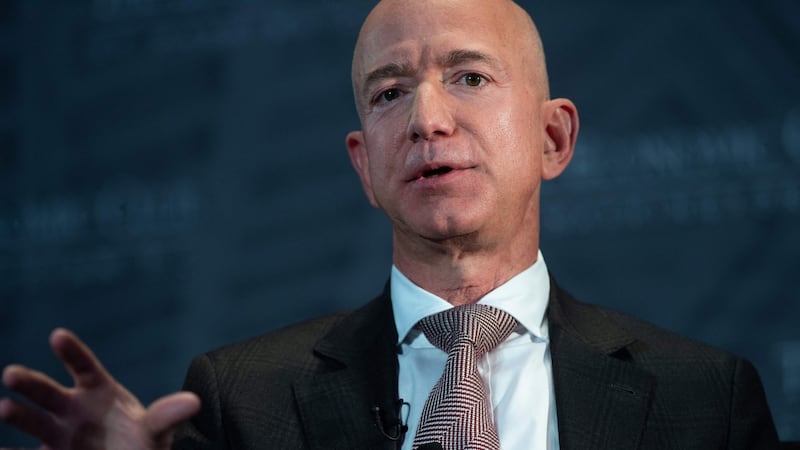Amazon isn't always stingy. The ecommerce giant, one of just four companies with a market capitalisation of more than a trillion, hates unions and has never knowingly underworked its vast labour force, but on some things it likes to splash cash.
Well, on one thing anyway. That thing is Amazon Studios’ forthcoming Lord of the Rings prequel, which it has emerged will cost NZ $650 million (€388 million) for the first series alone.
This will make it comfortably the most expensive television show ever made – and also give it frontrunner status for becoming the industry’s costliest flop if the producers get it wrong.
The New Zealand government, which is ponying up a 25 per cent subsidy (so NZ $162 million/€97 million) for the pleasure of being Amazon's location of choice, seems pretty happy about this, with its economic development and tourism minister Stuart Nash hailing the investment as "fantastic" – which indeed it literally will be.
Gargantuan audience
There’s a planned five seasons of Tolkienesque fantasy in Amazon’s pipeline, including a reported 20-episode first season. I feel all CGI-ed out just thinking about it, but Amazon wouldn’t be shelling out like this if it didn’t think there was a gargantuan audience out there. Would it?
Last week, Amazon founder Jeff Bezos declared in his last letter to shareholders as chief executive that he wanted the company to be "Earth's best employer" – Earth being just one planet in the solar system he wants to conquer – but maybe he meant to say "Middle-earth's best employer". It seems the more attainable goal.
Bezos, who will become Amazon’s executive chairman, also revealed that Amazon Prime now has more than 200 million subscribers worldwide, which was the first update that the company has given on this tally since January 2020, when it said it had crossed the 150 million threshold.
Despite the largeness of the number, the overwhelming vibe Amazon gives in relation to Prime – through, for example, its talk of drone-powered Amazon Prime Air – is that it’s only warming up. But what is Prime exactly and what does it want with us?
In the context of Lord of the Rings and Hollywood production arm Amazon Studios, Prime means Prime Video. This is the rival to Netflix, Disney Plus and the rest that can sometimes seem as if it has a shallower catalogue than Netflix, but does boast some big new film releases (Palm Springs, Sound of Metal, The Mauritanian are three recent ones in this rights region), high-quality series (The Marvelous Mrs Maisel, The Expanse) and – unlike Netflix – a nascent line in live sports rights.
But from the Amazon perspective, Prime is the wider “membership” product that makes certain shipping and delivery guarantees (depending on the market it is operating in) and then throws in various “exclusive” deals, access to certain music and books, plus Prime Video.
Secretive approach
About the popularity of Prime Video, the company has been ultra-secretive. No geographical breakdown has been given on those 200 million Prime members, nor has any information been released on how many of them actually use the subscription streaming service. In markets where the delivery guarantees are the main “sell”, Prime Video may not be much of a motivating factor behind the sign-ups.
No viewership metrics, not even self-reported ones, have been given in the history of the service. It is also not known how many people have signed up to Prime Video on a standalone basis either by opting for the under-promoted but slightly cheaper fee than “full” Prime, or by taking up a telecoms company offer such as that recently offered by Eir.
Still, 200 million is undoubtedly a large number of people to have “access” to Prime Video, whether they have pressed play on it or not. It suggests Prime Video remains ahead (for now) of Disney Plus, which crossed the 100 million subscribers mark at the end of 2020, and is closer in size to Netflix, which had 204 million subscribers at the last count and will update shareholders on its tally when it publishes its first-quarter numbers on Tuesday evening.

In part because of the less direct way that Amazon flogs Prime Video, debate about "streaming war" frontrunners tends to be confined to a straight-up clash between Netflix and Disney Plus, with Netflix's head-start and viewer loyalty pitched against Disney's content heritage and strong position in key markets such as India. But in Amazon there is a third player with the deepest of deep pockets.
So why, with the company’s vast scale in mind, is the Prime Video user interface so weird?
It’s one of the great enigmas of the modern age, up there with the chirpiness of continuity announcers and the hostility of urban seagulls.
Scrolling to find the much-publicised film you heard was “now streaming” on the platform? Be prepared for this quest to be torturous.
Search icon
That new release probably is there, lurking, but it’s shy. The trick is to fire up the magnifying-glass search icon and type in the title one letter at a time. After all, there must be few better ways to run down the “75 hours a year” Bezos said he reckoned Amazon’s ecommerce addicts save themselves by not having to visit actual shops.
Prime Video’s rental store origins are said to be responsible for what could politely be called the service’s usability quirks. Whatever the reason, an interface upgrade for the streamer is surely not beyond the bounds of one of the world’s richest companies.
As it stands, subscribers could be forgiven for wondering whether the man who gifted us this clunkiness – “inventor” and would-be space explorer Bezos – is really somebody you would trust to take you into orbit.
As for Lord of the Rings, epics must have epic price-tags, I suppose. But for that amount of money, the series would ideally want to have a few laughs – at least as many as, say, a Jeff Bezos shareholder letter.











